Today is a special day in many ways.
In one way, it is the Transit of Venus where Earth, the Sun and Venus happened to align themselves in a straight line.
At 06:00, where the transit of Venus begins, a team of 12 members were already busy looking at critters at Beting Bronok.
Located at the northern part of Singapore, this special reef is surveyed only once a year. This year is my very first trip to this special location. The trip started on a long boat journey as we headed towards the "light show" on the far horizon. The sky kept flashing with electric lines travelling through the clouds. We were worried.
Luckily, the weather was clear when we reached the reef. There was no proper jetty for the boat to dock. The team had to take a shallow swim as we climbed down a ladder from the boat to the seabed. The water level was almost thigh high. Clearly visible were the nasty
hydroids that were sending the message "come touch us with your bare skin".
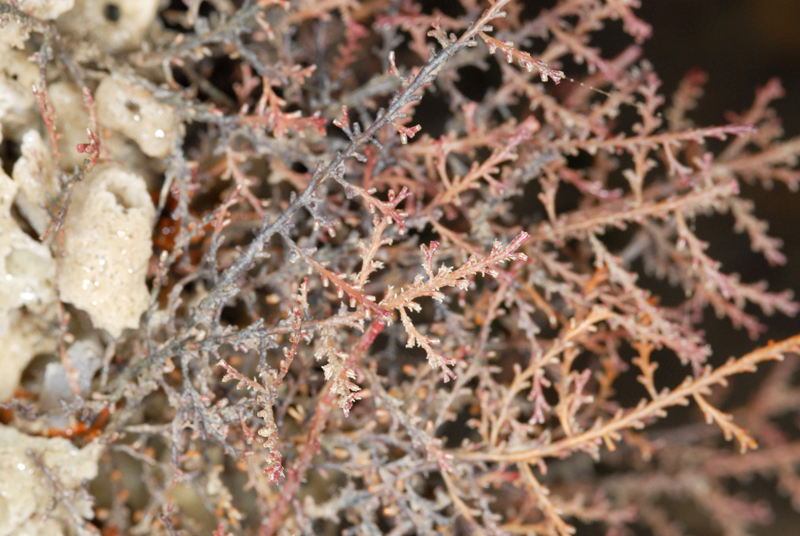 |
| Hydroids |
Hydroids are able to deliver power stings that are capable of leaving painful and ugly looking scars on the skins. So it is very important to cover our skins when going on any shore trips with long pants tucked into booties and long sleeves.
Once I reached the reef, I was greeted by many button zoanthids (
Zoanthus sp.). As the reef was exposed, the button zoanthids were in closed form.
 |
| Button zoanthids |
There are also colony of sponges spread out on the reef. The sponges comes in all kinds of structural form, colours and neighbouring critters.
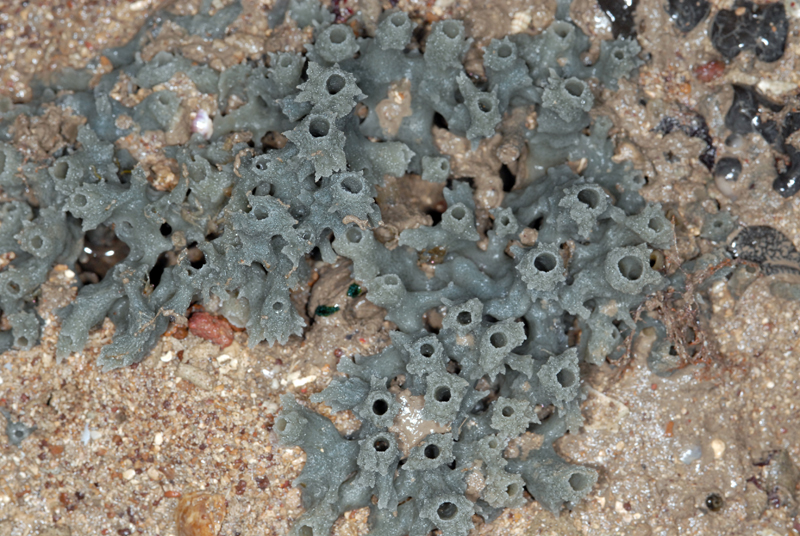 |
| Sponges |
One interesting critter that caught my eyes was the arrow-head spider crab (
Menatheius sp.). The spider crab is usually difficult to spot because of its thin body and legs. However this critter here was feeding on the substrate and the movement of its pincer gave way.
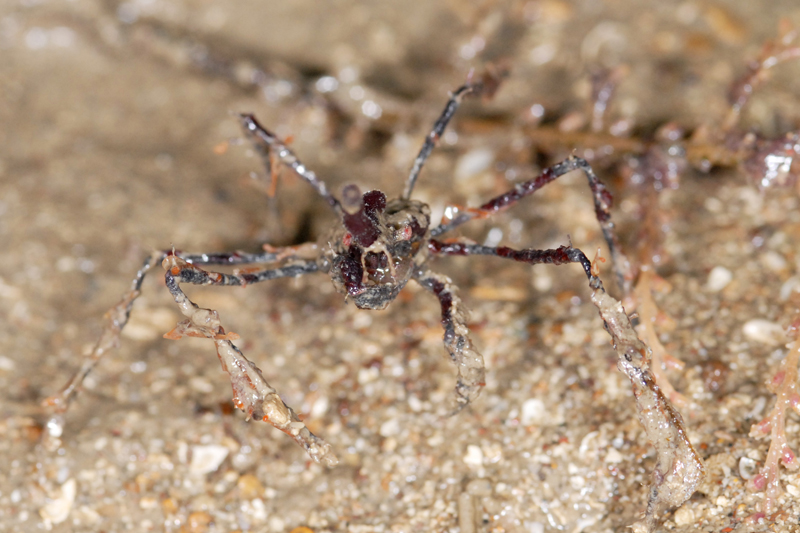 |
| Arrow-head spider crab (Front view) |
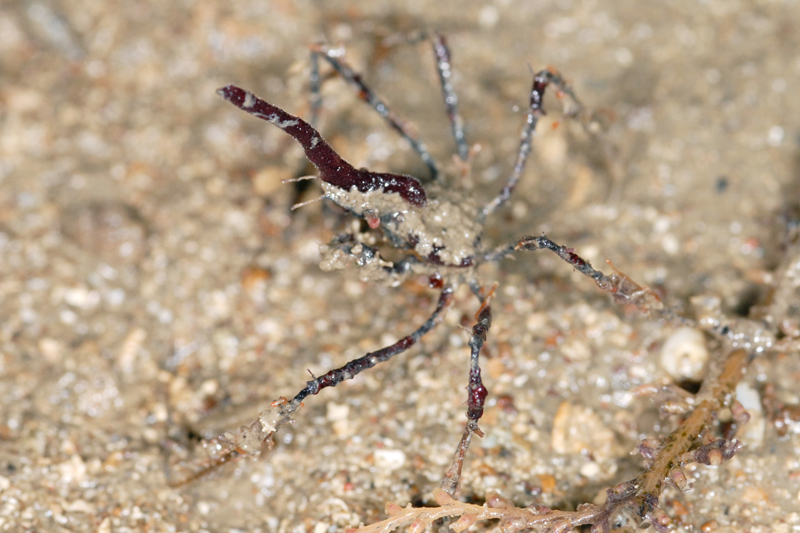 |
| Arrow-head spider crab (Side view) |
Also seen were 'gong-gong' (
Strombus turturella), onyx cowrie (
Cypraea onyx) and the thumbs-up sea squirt (
Polycarpa sp.).
 |
| Gong-gong |
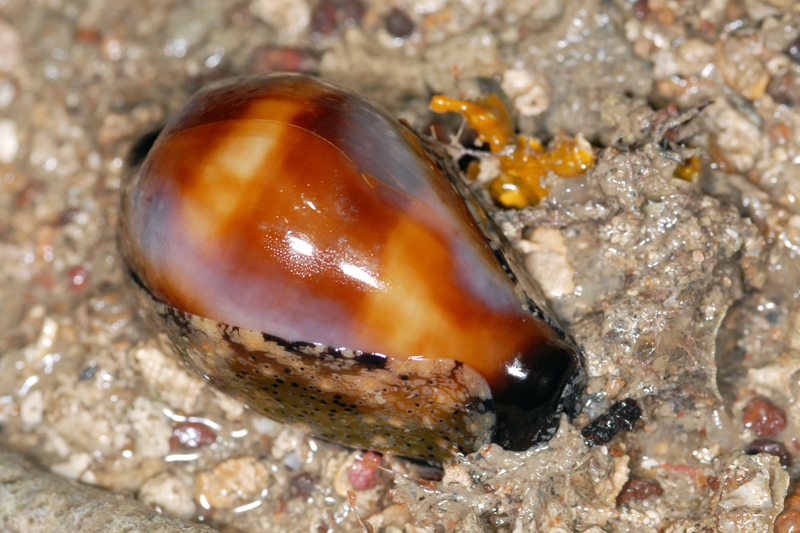 |
| Onyx cowrie |
 |
| Thumbs-up sea squirt |
A
many-banded snapping shrimp (Family Alpheidae) was seen tidying up its burrow while a small fish is found at its entrance.
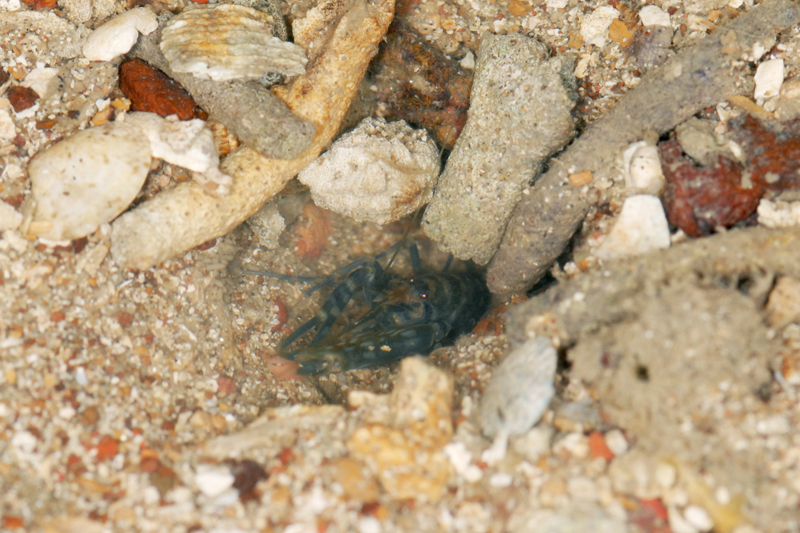 |
| Many-banded snapping shrimp |
 |
| Small fish near the entrance |
I notice that some hydroids on the exposed reef was twitching and on careful observation, it was actually the thorny sea urchin (
Prionocidaris sp.) that was causing the movement. There were many other thorny sea urchins found later on.
 |
| Thorny sea urchin stuck among sponges |
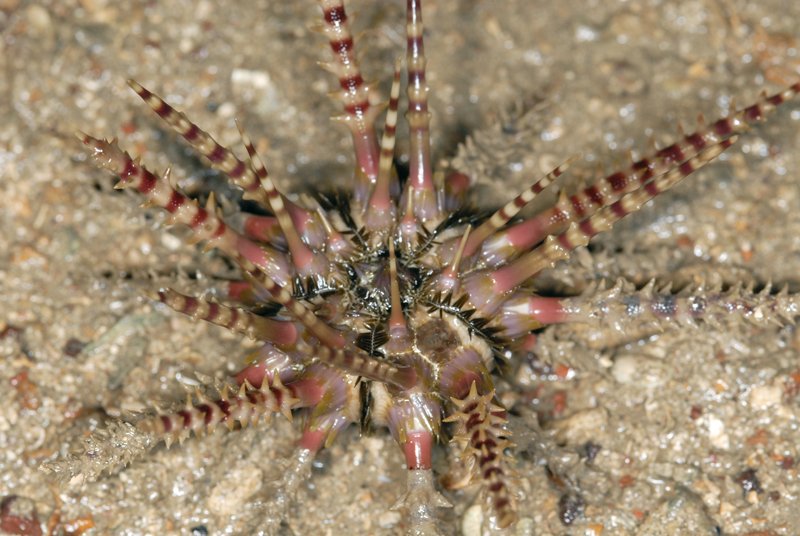 |
| Thorny sea urchin clean of mud |
 |
| Underside of the thorny sea urchin |
Other sea urchins found are the black sea urchin (
Temnopleurus toreumaticus) and the white sea urchin (
Salmacis sp.)
 |
| Black sea urchin |
 |
| Juvenile black sea urchin |
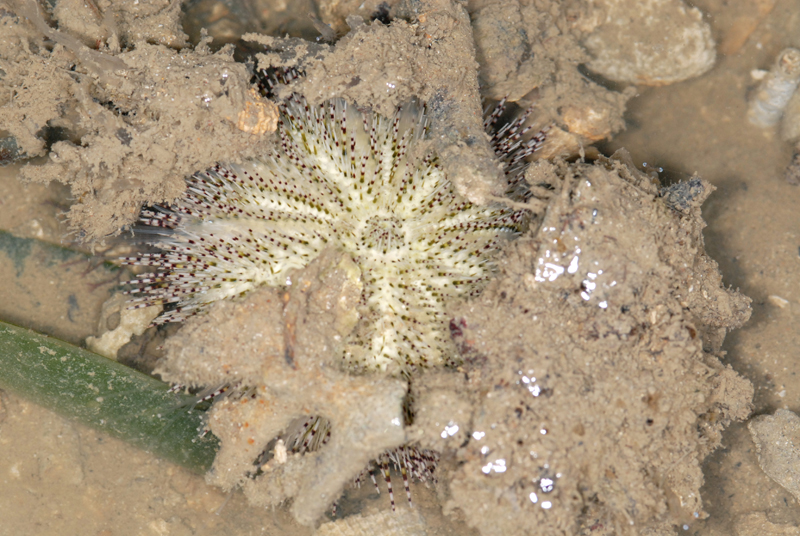 |
| White sea urchin |
A friend of my best friend was also spotted. It is the
banded hermit crab.
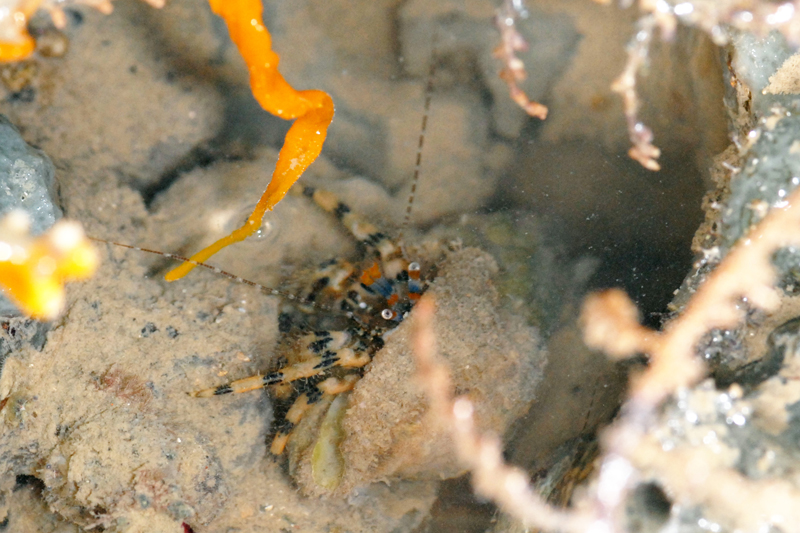 |
| Banded hermit crab |
A variety of sea stars can be found at Beting Bronok. I saw the biscuit sea star (
Goniodiscaster scaber), the cake sea star (
Anthenea aspera), the spiny sea star (
Gymnanthenea laevis) and the
brittle stars. The other team members spotted other types of sea star such as the Knobbly sea star, painted sand star and pentaceraster sea star.
 |
| Biscuit sea star |
 |
| Cake sea star |
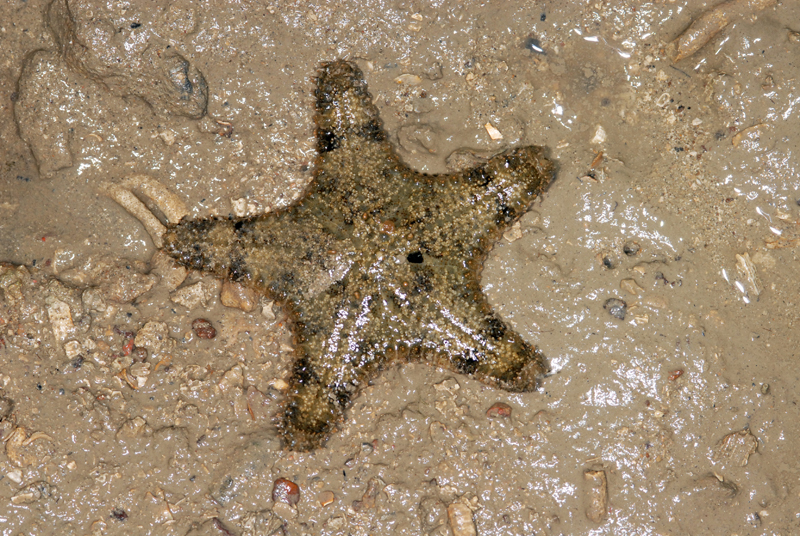 |
| Spiny sea star |
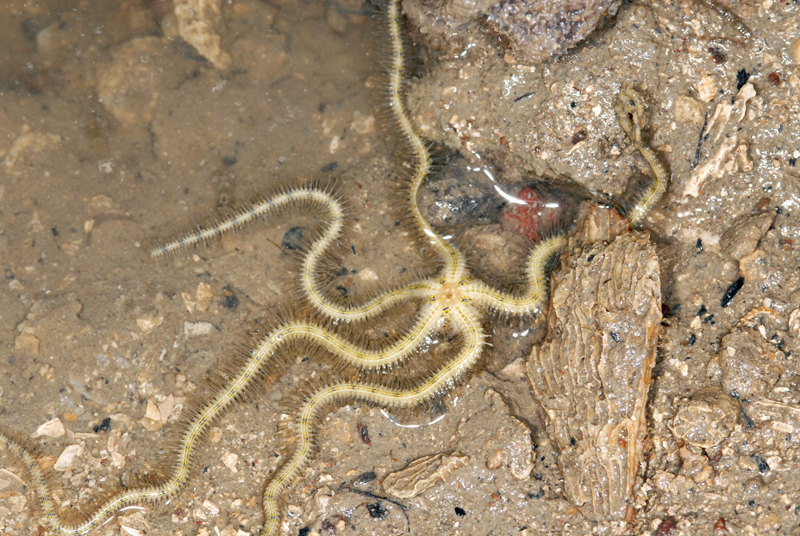 |
| Brittle star |
I saw two types of sea anemone, the plain sea anemone (
Paracondylactis sinensis) and the glass anemone (
Dofleinia sp.). One of our team members got stung by a glass anemone as her fingers touch the tentacles of the glass anemone. Luckily for me, I only felt the firm jelly-like boy column of the glass anemone.
 |
| Plain sea anemone |
 |
| Glass anemone |
I found a unknown animal on the exposed reef which I could not even recognise what kind of animal it is. I just took pictures of it and hope to identify it later. During the post-processing of my images, I notice the flower-like structure on a part of the animal which reminds me of nudibranch. Upon searching, this mud covered animal is none other than the yellow foot nudibranch (
Thordisa villosa). The flower-like structure is its feathery gills.
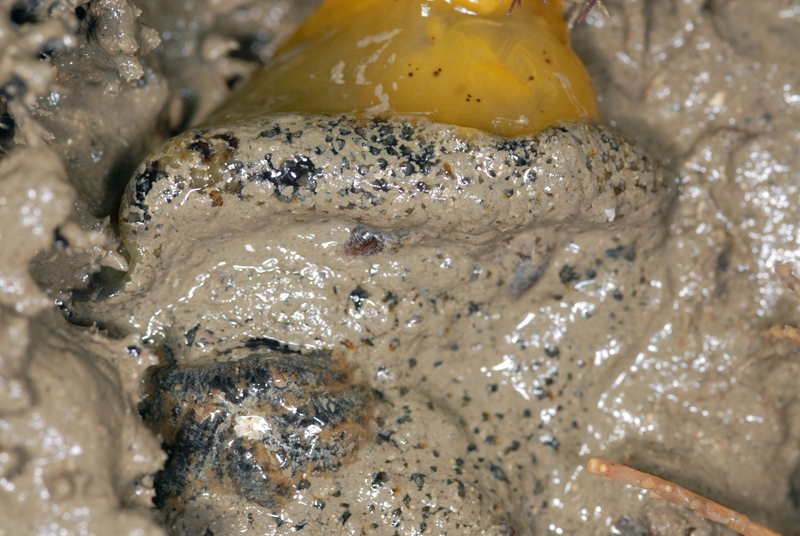 |
| Yellow foot nudibranch |
 |
| Feathery gills |
There were many
ball flowery soft coral (Family Nephteidae) spread out on the reef.
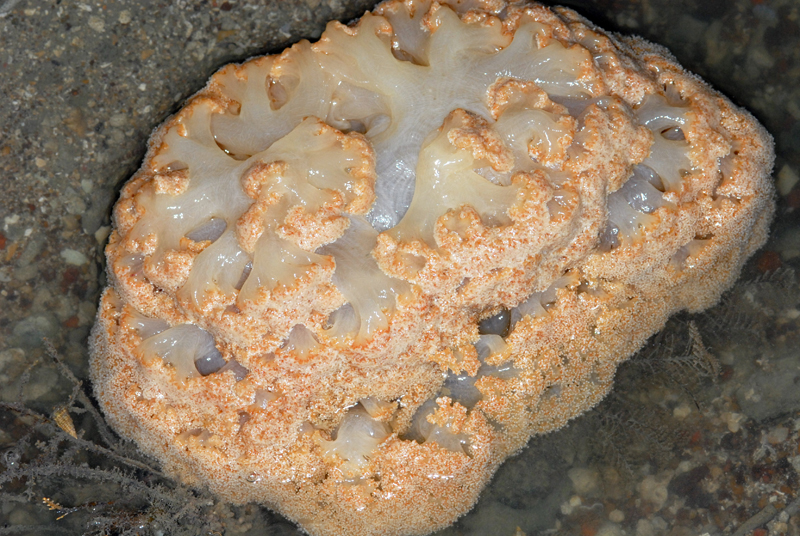 |
| Ball flowery soft coral |
What so special about this coral is that you might be able to find some commensals living in the corals. I only managed to find one commensal, the
white soft coral snapping shrimp (Family Alpheidae).
 |
| Peek of the white coral snapping shrimp |
 |
| Snapping shrimp giving a cute face |
The other commensal critters can be found in sea pens. The two types of sea pen I saw today were the spiky sea pen (
Scytallium sp.) and the slender sea pen (
Virgularia sp.).
 |
| Spiky sea pen |
 |
| Slender sea pen |
In one of the sea pen seen, I saw the painted porcelain crab (Porcellanella picta) of various size and colours. |
| Painted porcelain crab (purple) |
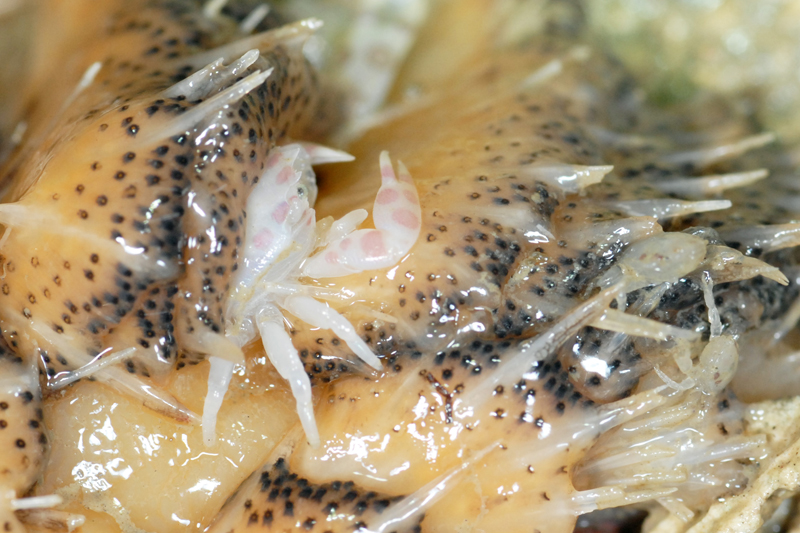 |
| Painted porcelain crab (pink) |
There were many spotted black flatworms (
Acanthozoon sp.) seen too. I did not expect them to be so big. One of them was as long as my hand.
 |
| Spotted black flatworm |
There are so many things to see but physical energy and the changing tides forces us to return back to the boat. It is another wade and then thigh high swim to the ladder.
This is an unforgettable first experience for me in visiting a shore without a proper landing. It was sure fun.
To end of, here's a brittle star saying "Bye!"
Post by others:
Mei Lin -
Psychedelic NatureRia Tan -
Wild Shores



































No comments:
Post a Comment